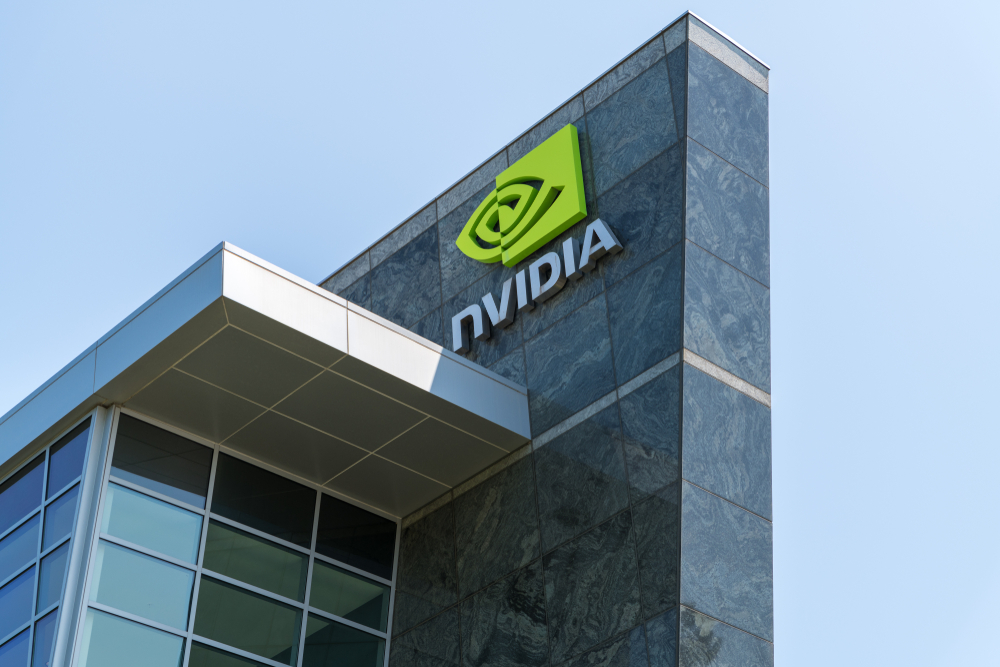Nvidia Underestimated Crypto Dependence - Analyst
The cryptocurrency bust might affect Nvidia’s financials more than the company’s let on. RBC analyst Mitch Steves reportedly warned investors that Nvidia severely underestimated revenues from crypto-related sales between April 2017 and July 2018.
Nvidia reported that it generated $602/£461 million in revenue from sales related to cryptocurrencies and blockchain technologies in that time period. According to Steves, however, that figure should be closer to $1.95/£1.49 billion. That's a discrepancy of over $1 billion.
Steves is said to have pegged the total crypto-related revenue for that period to be around $2.75/£2.11 billion. He then estimated that Nvidia captured 75 percent of the market, with AMD getting the rest. That would mean Nvidia made $1.95/£1.49 billion in that period (at least from crypto), while AMD made about $234/£179 million.
AMD’s guidance supports those figures, with Business Insider noting that the company “implied it had crypto exposure of $234/£179 million in the first quarter of 2018, which roughly matches the 25 percent of the total crypto revenue," citing Steves.
There is a mother of a caveat though. Steves believes these numbers can’t actually be confirmed. It’s not like people had to disclose why they were buying a GPU at time of purchase; there’s no way for the companies to determine if a sale during the cryptocurrency boom was related to mining.
Still, the estimates are sure to raise more questions about Nvidia’s performance since the cryptocurrency boom, especially since Steves slashed his price target after his findings. Investors were already concerned; SoftBank, Nvidia’s largest shareholder, was reportedly considering selling its stake.
Nvidia CEO Jensen Huang attempted to ease some of those fears by saying the company had nearly sold through its remaining inventory of 10-series graphics cards ahead of schedule. The idea was that finally getting through the oversupply of 10-series cards caused by the crypto bust would let Nvidia start selling the Turing-based GPUs it had announced in the interim.
Get Tom's Hardware's best news and in-depth reviews, straight to your inbox.
Yet the company lowered its Q418 revenue guidance in late January due to "weaker than forecasted sales of its Gaming and Datacenter platforms," among other economic factors, including Turing-based graphics cards being too expensive. We’ll find out exactly how bad things are for the company on February 14.

Nathaniel Mott is a freelance news and features writer for Tom's Hardware US, covering breaking news, security, and the silliest aspects of the tech industry.
-
bigpinkdragon286 If as the article says Mitch Steves alleges, cryptocurrency numbers can't be confirmed, good luck with pinning NVIDIA down to anything more than an expert's opinion.Reply
Personally, I suspect NVIDIA just lied to calm investors, planning for another of their, my bad, moments later on. -
redgarl The guy is from RBC. It is a well respected financial institution in Canada. He is not a loco mojo like many try to depict him as.Reply
And honestly, he's right... Nvidia is having a 500M$ hole in their budget. -
freedomnow The problem with the analysis is that Nvidia captured 75%. This does not look true based on what I know about mining and AMD. From my experience AMD cards were actually better at mining then Nvidia. This is why AMD cards were selling well above MSRP at a much greater percentage then Nvidia cards. Plus now those same cards are being sold for lower then MSRP. The GTX1060 is still being sold above MSRP. If this were true I would expect the GTX1060 to be priced to the floor as the supply should be large and the demand low.Reply -
zippz Freedomnow, the answer to that is AMD was conservative and didn't produce as many cards because they didn't know when the cryptomaket.would collapseReply
AMD was still having cashflow problems so couldn't afford to take a big sudden flop. Their cards were overpriced because of big demand and low supply due to it being better at crypto. -
photonboy Zippz,Reply
Probably correct... the main issue with all of this is that you need to ORDER the GPU's (processors not cards) from the fab which is a massive commitment and very risky when you are unsure when the crypto bubble would fail... NVidia dragged its feet, ordered even more GPU's and then the bubble burst leaving them (and/or their buyers) temporarily stuck with processors they might not be able to sell in the end...
And yes, AMD had stock issues too including massive difficulties producing the HBM cards...
Freedomnow,
"at a much greater percentage then NVidia cards..."
LINKS?? -
Olle P Reply
Sure miners wanted AMD cards, but AMD didn't deliver the amount required to fill the demand.21742045 said:The problem with the analysis is that Nvidia captured 75%. This does not look true based on what I know about mining and AMD...
That way Nvidia a) sold a bunch of cards to miners that were unable to buy AMD, and b) sold cards to some gamers that would otherwise also have purchased AMD.
Still, the question is how close to the truth the 75% estimate lies... -
redgarl Reply21743285 said:
Sure miners wanted AMD cards, but AMD didn't deliver the amount required to fill the demand.21742045 said:The problem with the analysis is that Nvidia captured 75%. This does not look true based on what I know about mining and AMD...
That way Nvidia a) sold a bunch of cards to miners that were unable to buy AMD, and b) sold cards to some gamers that would otherwise also have purchased AMD.
Still, the question is how close to the truth the 75% estimate lies...
Not really a matter and nobody knows the real numbers, but the fact is Nvidia knew about this and lied about it... or they were really dumb.
